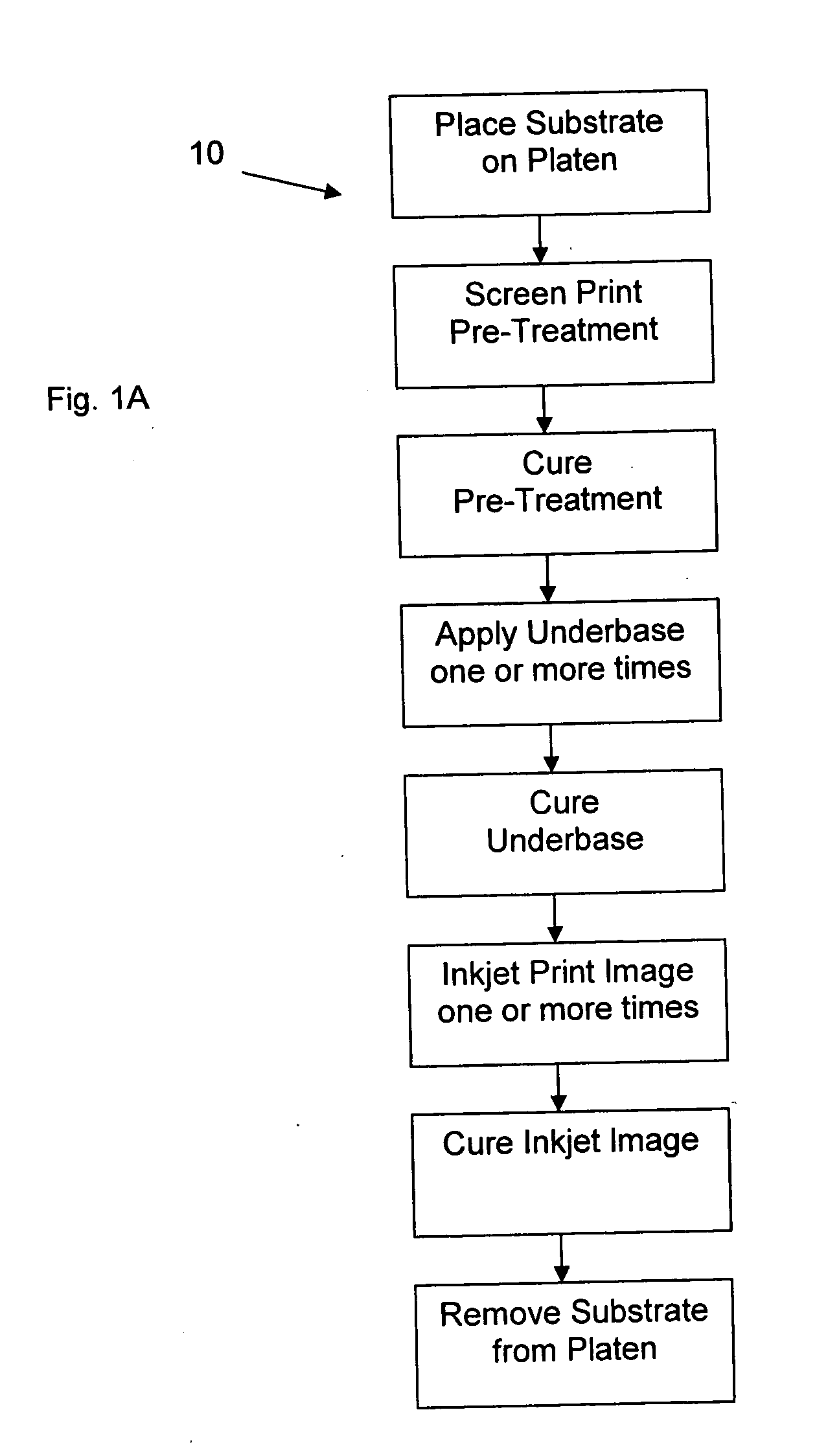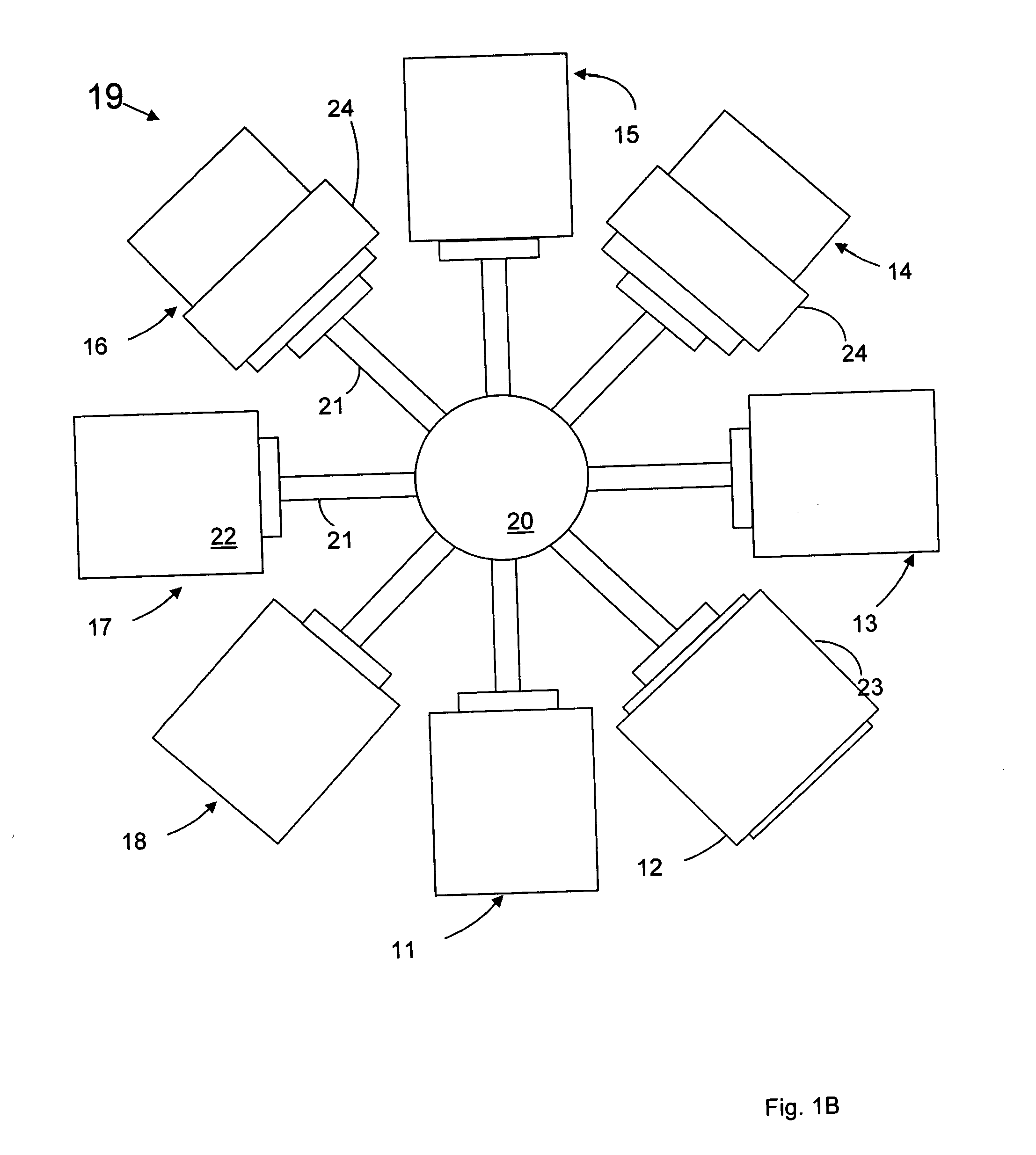Method for printing white on dark textiles using screen-printers and inkjet printers
a technology of inkjet printers and textiles, applied in printing presses, typewriters, printing, etc., can solve the problems of time-consuming and laborious, certain textiles do not screen print well, and dark textiles are the hardest to screen prin
- Summary
- Abstract
- Description
- Claims
- Application Information
AI Technical Summary
Benefits of technology
Problems solved by technology
Method used
Image
Examples
Embodiment Construction
[0023] This invention combines screen printing with inkjet printing to print light colors on dark textiles and other substrates. The method of the present invention comprises screen printing a pre-treatment on a substrate; inkjet printing or screen printing a white, opaque underbase on a substrate; and inkjet printing the desired image over the underbase. In the preferred embodiments, traditional screen printing equipment is used in conjunction with one or more inkjet printers. Preferably, at least one of the inkjet printers uses valve jet nozzles allowing it to print white ink. Also preferably, at least one of the inkjet printers uses a pass counter with a display. While it is envisioned that the method of the present invention would be used primarily to print white or other light colors on dark textiles, dispensing white or light colored ink on any colored textile or any other substrate would still fall within the scope of the present invention. The method of the present invention...
PUM
 Login to View More
Login to View More Abstract
Description
Claims
Application Information
 Login to View More
Login to View More - R&D
- Intellectual Property
- Life Sciences
- Materials
- Tech Scout
- Unparalleled Data Quality
- Higher Quality Content
- 60% Fewer Hallucinations
Browse by: Latest US Patents, China's latest patents, Technical Efficacy Thesaurus, Application Domain, Technology Topic, Popular Technical Reports.
© 2025 PatSnap. All rights reserved.Legal|Privacy policy|Modern Slavery Act Transparency Statement|Sitemap|About US| Contact US: help@patsnap.com



